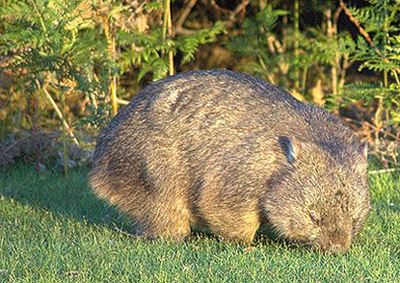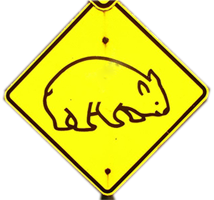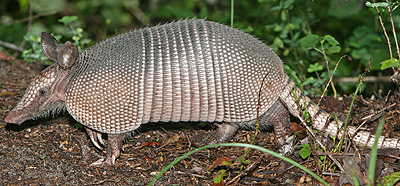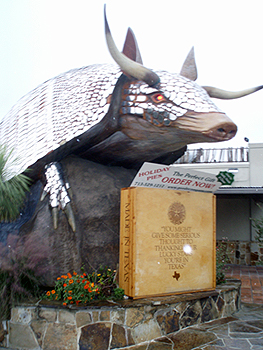Of Wombats and Armadillos
by Andrew Boyd
Today, why did the wombat cross the road? The University of Houston's College of Engineering presents this series about the machines that make our civilization run, and the people whose ingenuity created them.

Wombats can only be found in Australia — the land of dingoes, wallabies, and Tasmanian devils. They look like small, cuddly bears — terrestrial koalas, happy to burrow for roots rather than climb for leaves. The young are cute and playful, making wombats popular attractions at Australian zoos. Wombats move slowly and feed at night. And that's why they show up in math problems.

"Cars arrive along a stretch of road according to a Poisson random process," read my student probability textbook. "What's the chance a crossing wombat arrives safely on the other side?"

When I became a professor, I held to tradition and entertained my students with stories about wombats crossing roads. But my stories weren't that entertaining. That is, until a student offered a suggestion. "This is Texas," he said. "We don't have wombats. But we do have … armadillos." I changed the story line. And from then on the students never failed to laugh.
I'd seen armadillos, but set out to learn more about them and what, if anything, they have in common with wombats. Armadillos aren't cuddly. They have a hard outer shell made of detached plates. It makes them look a lot like medieval knights in armor. Twenty species of armadillo are found in different parts of the Americas. The delicate pink fairy armadillo is the smallest, at about five inches in length. One species, the Brazilian three banded armadillo, rolls itself into a ball when threatened. That's not true of the nine banded armadillo found in Texas and throughout the southern United States.

But while they're not cuddly, armadillos are likable. They have a soft, furry underside and a gentle demeanor, inspiring some people to keep them as house pets. They're related to anteaters, and ask nothing more than bugs and a little grass for food. Armadillos are so likable, Texas designated them the state's official small mammal. (Large mammal bragging rights went to the longhorn.)

A two story Texas armadillo as imagined with long horns.
But like the ill-fated wombat, armadillos move at a leisurely pace and like to feed at night. And worse. When startled, they jump — straight up. It's a defense mechanism intended to scare away predators. Unfortunately, that doesn't work very well when the predator's a 3000 pound SUV.
So what do wombats and armadillos have in common? Biologically, almost nothing. But wombats and armadillos are both endearing. As humans, we connect with them. They're also part of local lore; lore that includes encounters with motorized vehicles on paved surfaces. And that makes them ideal for getting students engaged in their studies. Though I've learned my lesson. Choosing the right animal can make all the difference in the world.
I'm Andy Boyd at the University of Houston, where we're interested in the way inventive minds work.
An updated version of this episode can be found at 3118.
Armadillo. Taken from the Wikipedia web site: https://en.wikipedia.org/wiki/Armadillo. Accessed December 9, 2008.
Armadillo Online! https://armadillo-online.org/. Accessed December 9, 2008.
A. Drake. Fundamentals of Probability Theory. New York: McGraw-Hill, 1967.
Wombat. Taken from the Wikipedia web site: https://en.wikipedia.org/wiki/Wombat. Accessed December 9, 2008.
Picture of the giant statue of an armadillo by E. A. Boyd. All other pictures courtesy of Wikimedia Commons.